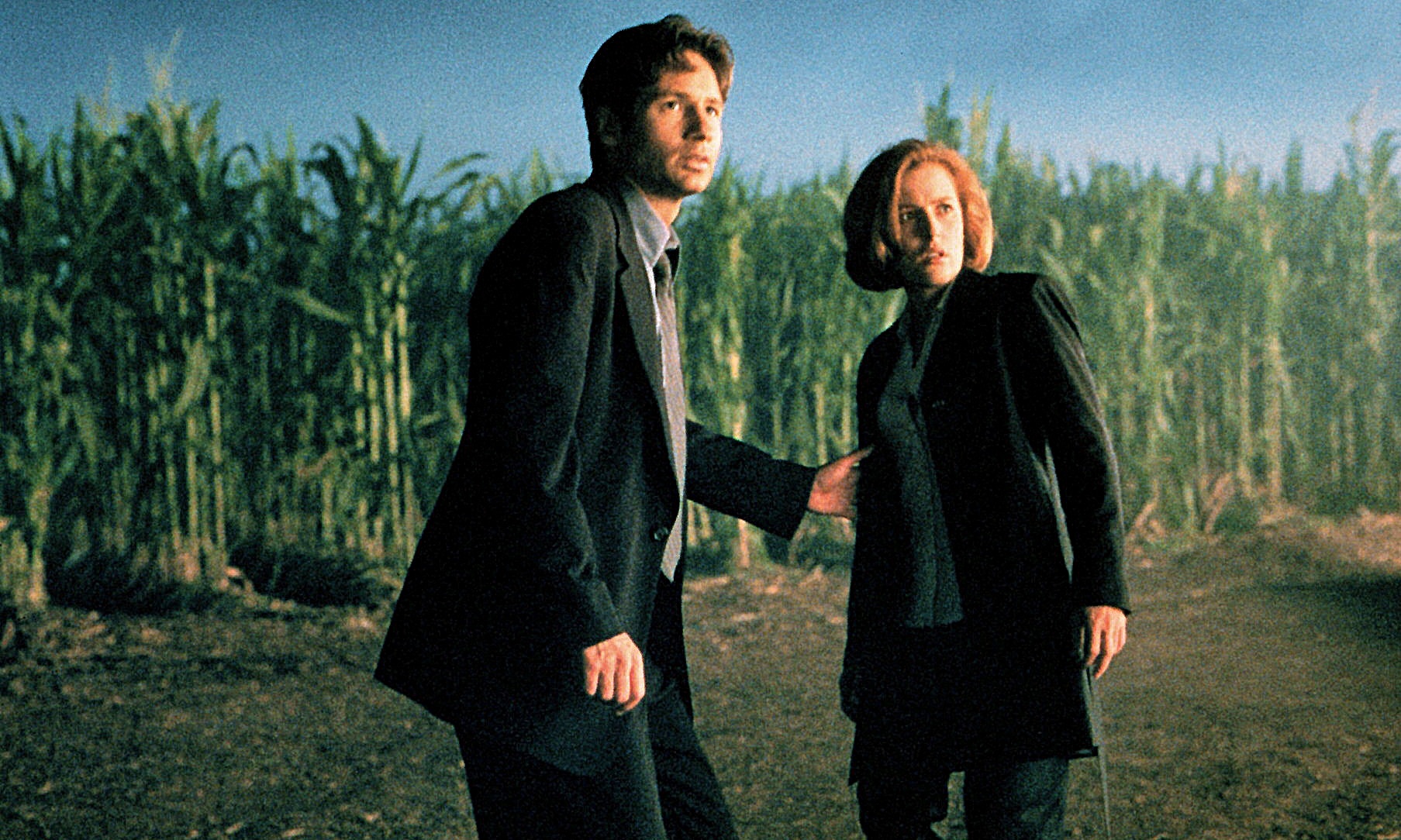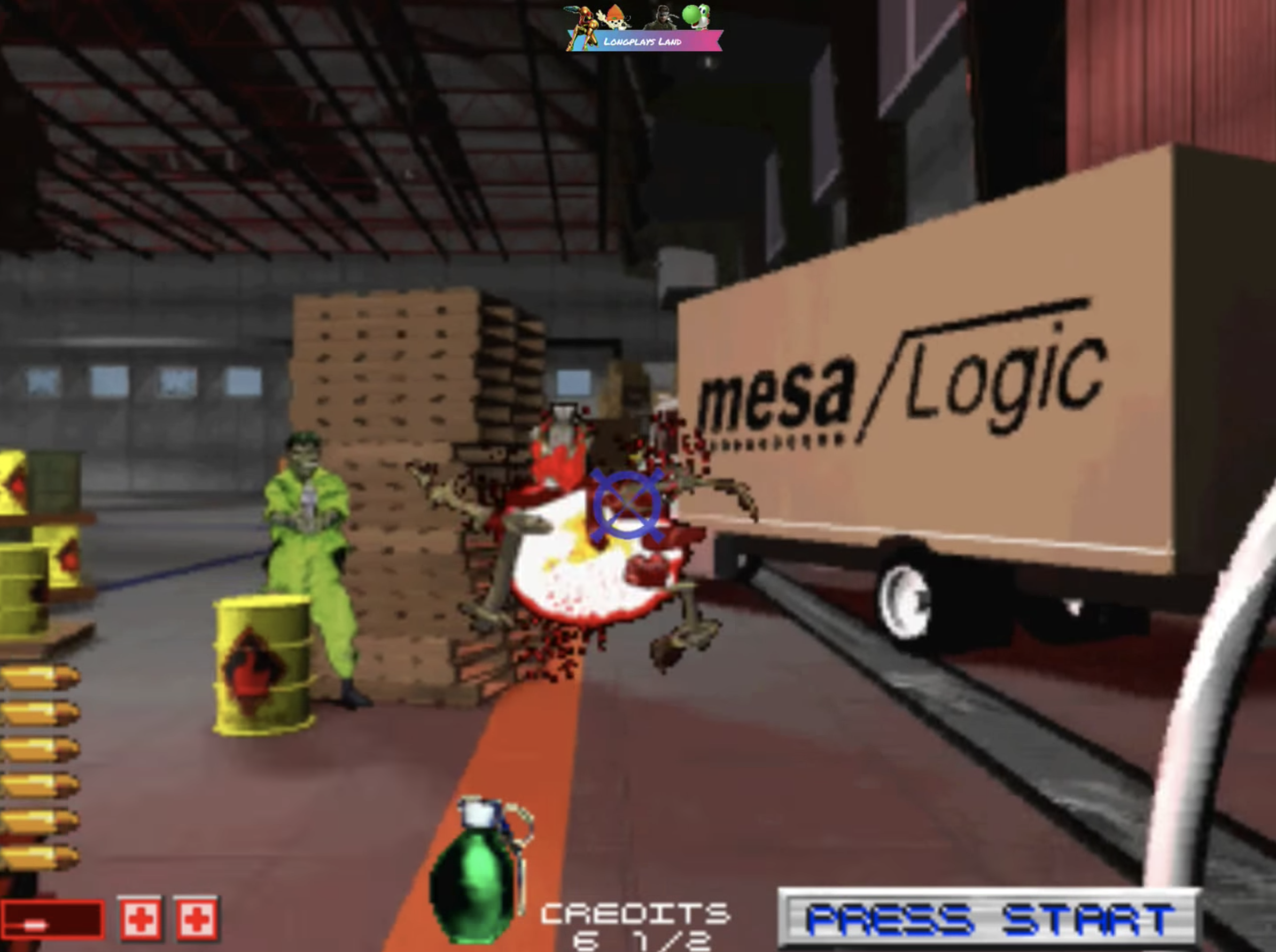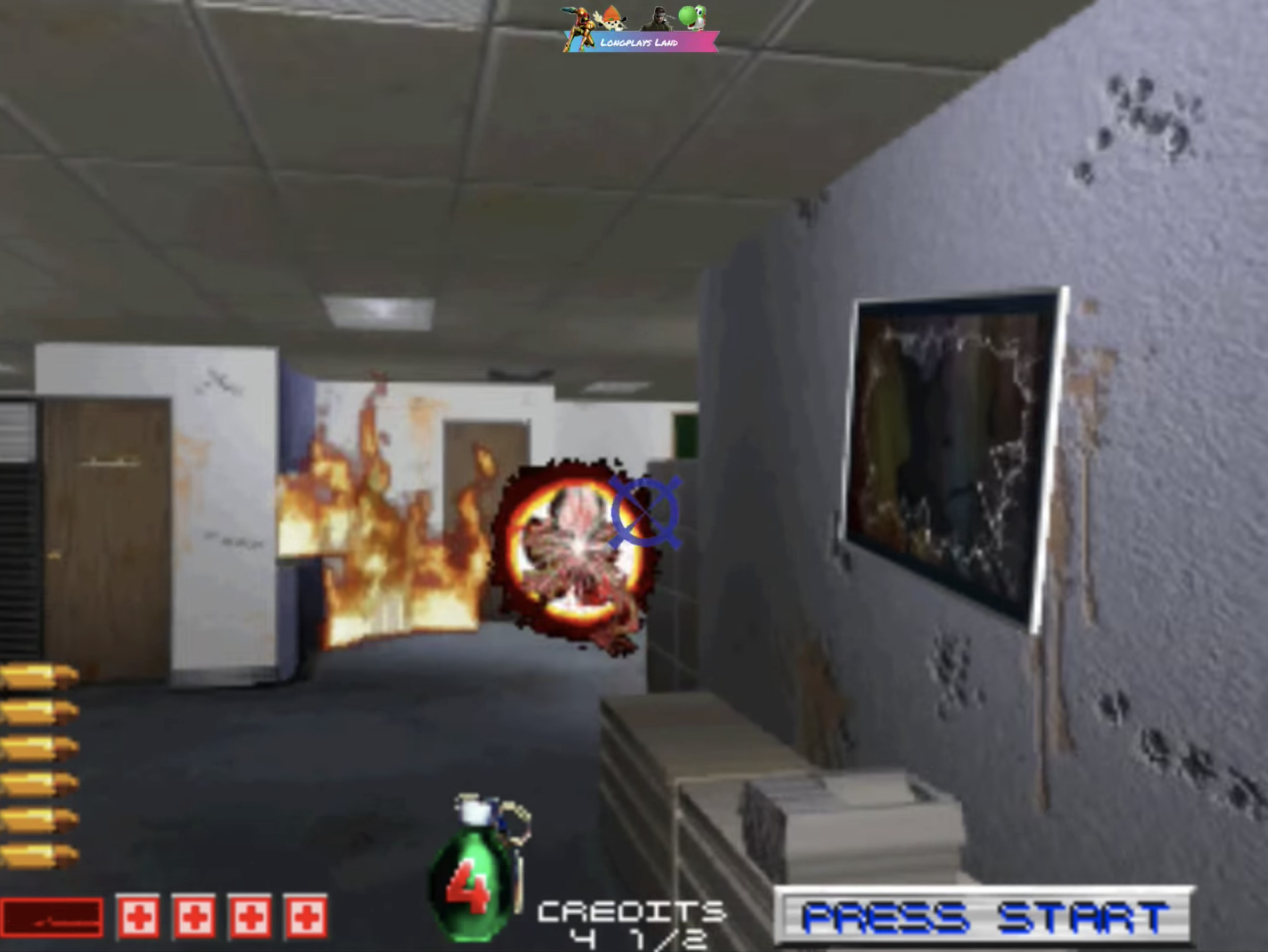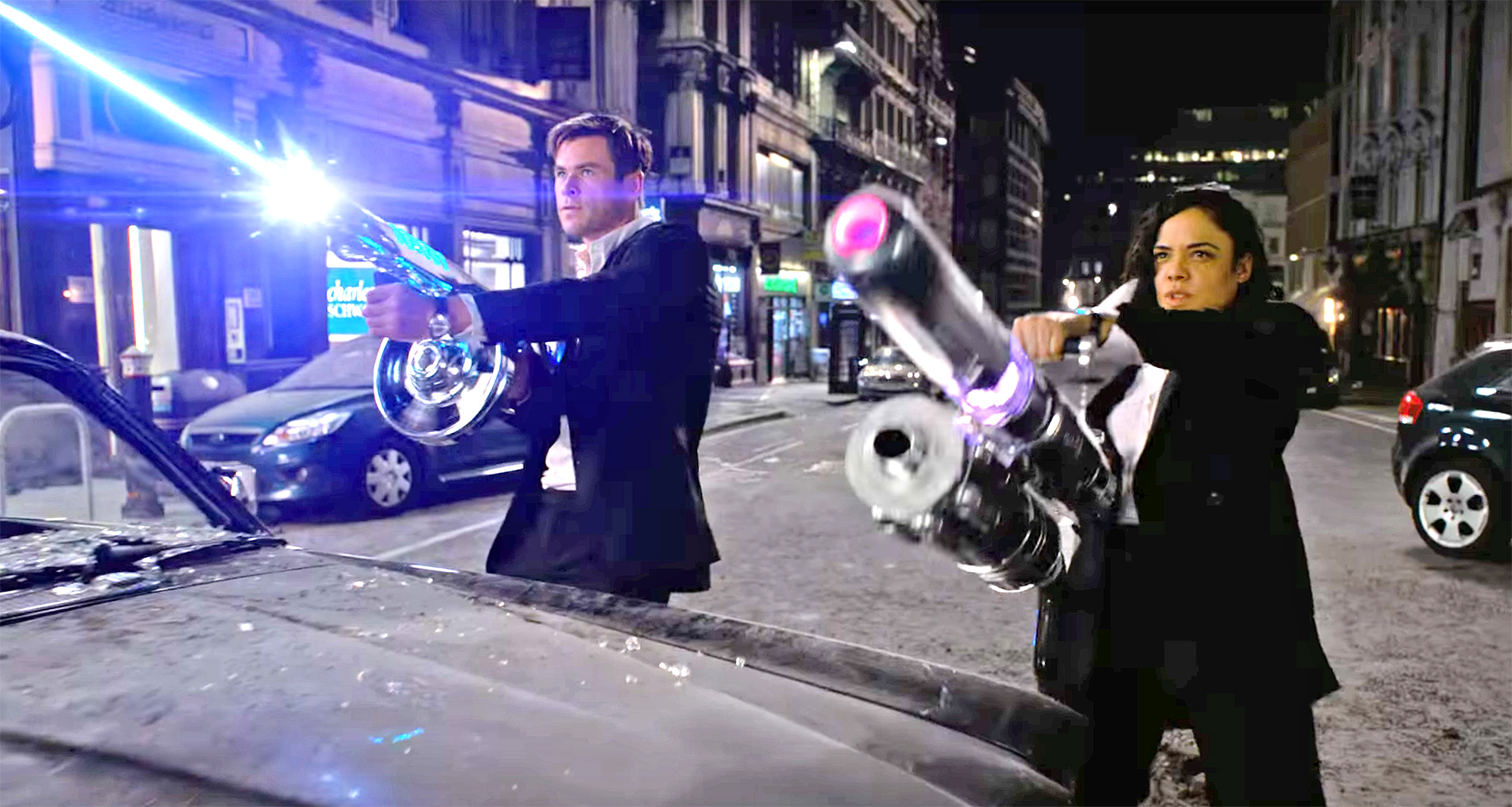Area 51 Nostalgia Yearns for a Time When Evil Had to Hide
Credit to Author: Cameron Kunzelman| Date: Fri, 19 Jul 2019 18:21:44 +0000
Postscript is Cameron Kunzelman’s weekly column about endings, apocalypses, deaths, bosses, and all sorts of other finalities.
On September 20, some people are planning on “storming” Area 51. 1.5 million people have RSVP’d on Facebook to say that they are going to meet up at the “Area 51 Alien Center” at 3 a.m. on that date to “Naruto run” into the facility in order to best dodge bullets. It is classic internet jokery, but it’s brought Area 51 back into the limelight for just a moment and reminded me that Area 51 might be responsible for why I enjoy video games so much.
I’m still not quite sure how I came to own the on-rails lightgun shooter Area 51 for the Sega Saturn. The Saturn came for Christmas one year, certainly the most expensive gift that I have ever received for any holiday, and I’m assuming that at some later date my parents found it on sale and grabbed it to complement the Virtua Cop light gun that was currently being used for one single thing.
It was the 1990s and aliens, and Area 51 in particular, were everywhere. The Cold War fever had broken, and the hangover of fifty solid years of paranoia was now free-floating through society, looking for something to latch onto. The X-Files was dominating television. Unsolved Mysteries put true crime murders with real-time arrests up against alien abduction recreations. Like a lot of other people, I was fascinated by paranormal conspiracy theories in a way that was only matched by Forgotten Realms novels and the Teenage Mutant Ninja Turtles.

In any case, by 1996 I was fully immersed in a culture that was concerned about aliens and the nefarious military base called Area 51, and I was also playing Area 51 , which tasked me with tearing through zombified base workers before gunning down their alien controllers.
I would work as far into the game as I could before being turned back, my childhood reflexes never matching up to the relentless onslaught of these digital creatures. But Area 51, a generally forgettable game chock full of 90s weirdness like pinup posters, was hiding something beneath the surface: Kronn Hunter Mode.
I don’t believe I knew what an “easter egg” in a game was before I discovered this secret mode in Area 51. I cannot think of a game that I had played previously where I had found secret, hidden things that we not necessarily part of the actual game. While I had delved into infinite lives in Castlevania with a Game Genie, and even found Warp Rooms on my own in Super Mario Bros., Kronn Hunter Mode was so cleverly hidden that it felt like an arcane revelation. Like something that crawled out of Area 51 itself.

Playing Area 51 in normal mode meant playing as a STAAR soldier who needs to clear out the alien threat inside of the facility and initiate a nuclear explosion to wipe them out for good. It’s typical 1990s stuff, and it worked just fine. But if you began the game and did not shoot any traditional enemies, and instead only shot your STAAR allies that popped up, then a whole other story was revealed to you.
The aliens in the game are actually rebels, and the Kronn Hunter has been sent by the mainline alien faction to quell the insurrection. Your bullets turn into insectile cylinders. Your vision takes on a sickly night vision green. And you can play through the entire game this way, though it turns out that it only minutely changes the story and adds little actual value to the experience.
But for me, in 1996 and reading this in Tips & Tricks, this was world defining. There was a whole other thing in this game, a whole secret mode, that you might never find if you were playing the game the right way. It was right there under my nose the entire time: a hidden truth about the game’s story. There were probably thousands of people who played this game in arcades and in their living rooms who never even knew about what lurked down in the depths.
Of course, this mimics the allure of the real Area 51, and I can’t quite distinguish my fascination with the interior worlds of games from my fascination with the hidden mysteries of the military industrial complex. I was attracted to Area 51 and its hidden modes and easter eggs because it showed that there was something beneath the mystery. There’s maybe no better demonstration of how Area 51 was figured in culture than 1996’s Independence Day, which posits that the things that are going on there are so secret and potentially terrifying that the President of the United States does not even know about them. The levels of things we don’t know, that we’re not meant to know, are beyond our estimation.

While the meme of assaulting Area 51 flourishes to the point that the military has issued a response, I do wonder if the sudden whiplash focus back on the facility says something about our contemporary cultural priorities. There was this idea that “the truth was out there” and its revelation could fracture our conception of the superficial reality we thought we inhabited. If all the government’s dark secrets were ever brought into the open, it would be like falling into Grand Theft Auto III’s Blue Hell. We’d be confronted with something as cryptic and nonsensical as it was enlightening.
In the 1990s, in that Cold War hangover, I have the sense that Area 51’s mysteries were a way of coming to terms with what the United States had been doing since 1945. The public interventions against communism worldwide, including the disastrous and violent Vietnam War, were what the public could see. And if that was the case, what kind of brutal secret warfare was being conducted hundreds of feet below the desert floor? The Church Committee investigations had revealed incredibly invasive and violent espionage and assassination activities by US intelligence agencies, but most of its findings were still hidden from public view. Area 51 operated in culture as a kind of catch-all for the feeling that something terrible had been happening since World War II, it was hidden, and it was tied to America’s power as a nation.
9/11 and the War on Terror ripped the mask off that power, though. There was no hidden machinery. There was Guantanamo Bay and extraordinary rendition and two massive invasions of countries that had very little to do with the attack on American soil. We had the Torture Memos and the continuation of the global gag rule. The idea that there was some kind of mysterious black operations happening became laughable. It happened in front of us, constantly, and only seemed to accelerate until we ended up in a situation where an administration was arguing that it was fully within the realm of legality to kill American citizens with drone strikes. American power was no longer abstracted into black budget speculation and special weapons or experiments being performed under the cloak of military covert ops. It was clear what made America work on the global and the local stage: blunt trauma, applied again and again.
Again, things have only accelerated. Guantanamo Bay now has a nursing facility on-site with the expectation that those who were detained during the ongoing War on Terror will continue to grow old and eventually die there. People are being placed in migrant detention camps in record numbers and forced to live in inhumane conditions. The executive branch of the United States House of Representatives has condemned the President’s remarks about sitting Congress members as racist. We’re living in a situation where the machinery of politics is right out in front of us, screaming constantly in a stream that would have been confined to far-right news blogs a decade ago.

And I wonder if storming Area 51 is a way of retreating to a simpler, pre-9/11 view of the hidden things. People want to rush Area 51 because there’s nothing hidden there anymore. Despite still being a major institute for American military power, it has the same cultural cachet as a Hey Doug meme. Only 90s kids will remember this one.
More than being silly, a million people saying they want to flood into Area 51 is a dark joke. It’s not a yearning for a less violent time, but a time when the horror of what America does to maintain itself could be abstracted away from the images of violence being wielded against the most vulnerable people in our society with a joy and justification that always bubbles at the edge of sheer cruelty. Men in dark suits and glasses harboring evil experiments in an underground lab seems almost warm and pleasant in the face of reality.
“Attending” the rush on Area 51 is a generation nostalgically tapping back into a time when things were back behind the curtain. Like all nostalgia, it is a yearning for something that is as much fiction as reality; anyone paying attention would tell you that the violence of American statecraft was there to see, easily, for anyone who decided to see it. For the people who weren’t there, it’s projection of themselves into a moment that never existed for them, a time when you could maybe, if you squinted, absolve yourself from having to reconcile your personal existence with the world that affords that existence.
Follow Cameron Kunzelman on Twitter.
Have thoughts? Swing by the Waypoint forums to share them!
This article originally appeared on VICE US.